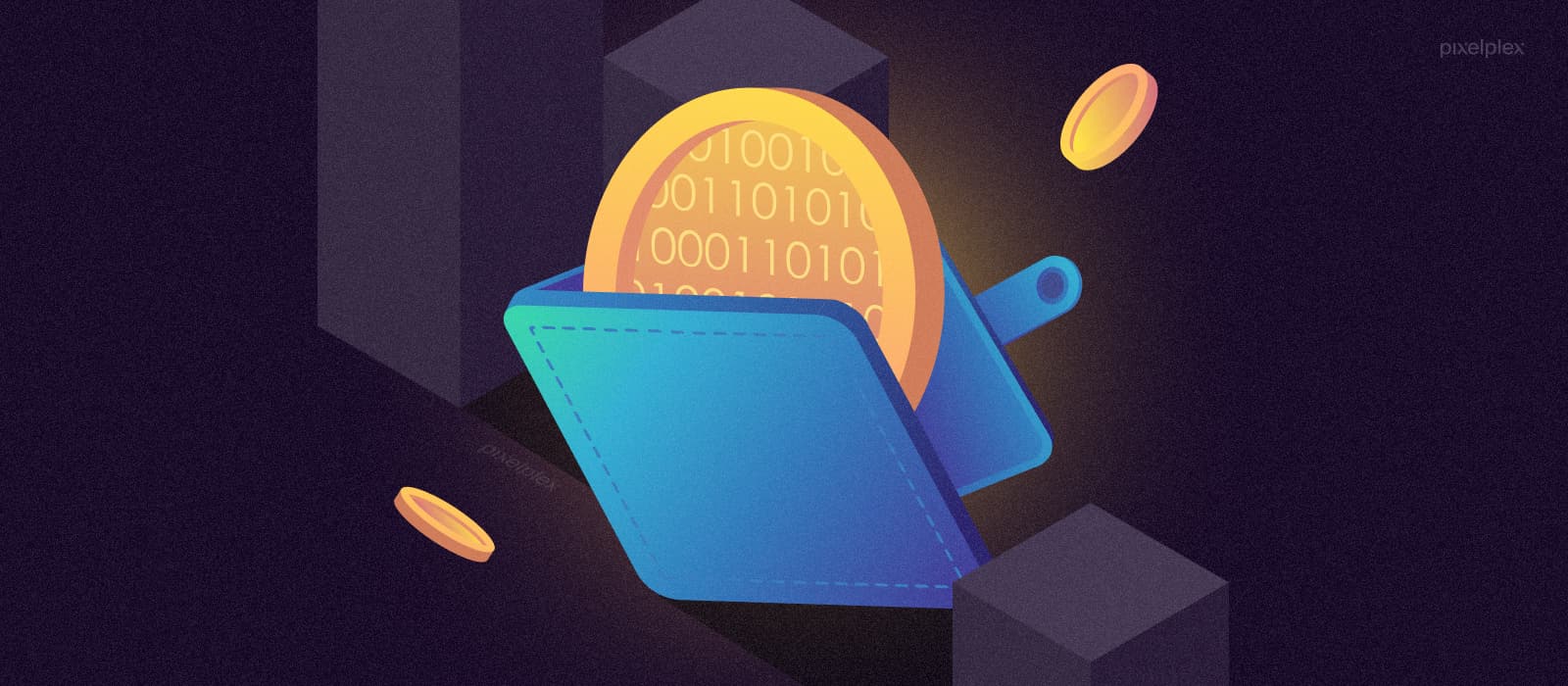What is one thing many prosperous blockchain projects have in common? The answer is definitely robust and well-thought-out tokenomics. But why is it so important?
Blockchain adoption continues to gain traction, with numerous and diverse projects launching regularly. It is estimated that global spending on blockchain solutions will surge by 235% and reach $14.4 billion by 2023. The industries that blockchain can be applied to are unlimited: finance, governance, education, healthcare — almost anything you can think of.
Yet, no matter the industry specifics, a blockchain project does need reliable tokenomics to develop steadily and attract a wider pool of investors and users. This is where expert tokenomics consulting and development becomes crucial.
Let’s find out what tokenomics is and what its most crucial components are. In addition, we’ll examine the key takeaways from the tokenomics strategies of some of the world’s best-known blockchain projects.
Just scratched the surface on the concept of tokenomics? Deepen your understanding with our comprehensive video episode that delves into the intricacies of the token economy. Equip yourself with the knowledge to navigate this dynamic space. Watch the full episode now.
Get acquainted with the top smart contract platforms
This article is part of our larger series dedicated to Tokenomics. To explore this topic in greater detail, here’s the list of articles we recommend:
5 Steps to Develop an Efficient Token Economy for Crypto Games
What Is Token Distribution: Overview of the Most Effective Methods
How to Create a Crypto Token: Steps, Types, and Benefits
7 Steps for Designing Successful Project Tokenomics
What is tokenomics and how does it work?
Tokenomics, or token economy, is a general term describing all aspects and processes connected to a project’s token, including its emission, supply, distribution, incentives, and use cases.
All tokenomics conditions are executed by the smart contract development services. This way, everything from launching tokens to their distribution is done automatically and is forever encoded on the blockchain.
Why is tokenomics important?
A solid tokenomics safeguards the token’s liquidity, which in turn ensures the vitality of the blockchain project and helps gain profit.
Many investors consider tokenomics as one of the most critical factors when evaluating a crypto project. An underdeveloped tokenomics can severely hinder the growth of a project, however innovative it may be.
What are the main components of tokenomics?
![]()
There are several tokenomics components that determine the principles of its operation. These include:
Token type
Depending on the project’s specifics and goals, there are different types of tokens it can issue. They can be payment tokens, stablecoins, utility tokens, security tokens, and non-fungible tokens.
Each type cardinally differs from the others, fulfilling its specific function. For example, utility tokens unlock access to some products or services offered by the project while security tokens prove ownership over physical or digital assets. Expert partners provide companies with various stablecoin development services.
Don’t miss our step-by-step guide on how to develop your own token
Token distribution
Blockchain projects opt for different token distribution models to increase the value of their native tokens. They can:
- Initiate airdrops and lockdrops
- Offer tokens to venture capital firms
- Launch public sale campaigns
- Send tokens to loyal users as rewards
Token use cases
The more established a project’s ecosystem is, the more token use cases it can offer, appealing to wider user groups and increasing its market value. Tokens can be used for participation in the project’s governance, serve as a pass to exclusive activities, be an element of web3 games, and more.
Token supply
There are three important notions related to token supply:
- Maximum supply refers to the ultimate number of the project’s tokens that will ever be minted. It can be limited and unlimited.
- Circulating supply means the portion of tokens already on the market.
- Total supply defines the amount of already issued tokens minus burned ones.
Tokens are not released on the market all at once, but according to a predetermined schedule. A robust tokenomics allows for the balancing of maximum token supply and circulating supply so that the token does not drop in value.
Token burn
To regulate cost/supply ratio and prevent inflation, projects can permanently remove a share of their native tokens from circulation or “burn” them.
Token staking and liquidity pools
Depending on the project’s tokenomics, token holders are often encouraged to either stake their tokens or contribute them to liquidity tools. The collected tokens are then used to power decentralized exchanges and lending platforms. After a specified period of time, users can retrieve their tokens and get new ones as yield.
Meet Alfprotocol — a yield farming and liquidity protocol with enhanced leverage and farming rewards built by PixelPlex
Token allocation and vesting
To maintain the credibility of the project, most tokenomics impose vesting periods on the tokens allocated to venture capitalists or developers. This means that tokens are locked for a certain period of time, reducing the risk of pump and dump schemes.
Token cross-chain accessibility
Some tokenomics elaborate ways of making a token accessible to users across different blockchains. So if a token is Ethereum-based, for example, it can be transferred to other networks via bridge infrastructure.
Overview of robust tokenomics models
![]()
To help you better understand how tokenomics works, we will examine how three successful blockchain projects implement it, namely Bitcoin, Ethereum, and Tether.
Bitcoin tokenomics
Bitcoin’s tokenomics is outlined in the whitepaper, which specifies that it is a peer-to-peer electronic cash system for online payments requiring zero intermediaries.
According to its tokenomics, Bitcoin is distributed through mining. The token supply of Bitcoin is limited and amounts to 21,000,000 coins. The last coin is expected to be minted in 2142 and after that there will no longer be a new supply. When all Bitcoins are released into circulation, miners will be expected to earn revenue through the fees they get from users for confirming transactions.
To increase scarcity, the number of Bitcoins emitted per block is regularly reduced. This process is called Bitcoin Halving. The most recent halving occurred on May 11, 2020, reducing Bitcoin emission from 12.5 bitcoin per block to 6.25 bitcoin per block. The next halving is expected to take place on May 4, 2024, with Bitcoin block reward dropping to 3.125.
At the time of writing there are 19.30 million Bitcoins in circulation, which is 91% of the total supply.
Find out what to consider when designing a successful project’s tokenomics
Ethereum tokenomics
Ethereum is the second largest cryptocurrency by market capitalization after Bitcoin and a massive blockchain ecosystem. It has no limit on its token supply, meaning that token emission can continue endlessly. In March 2023, there were 120.48 million ETH in circulation.
The blockchain functions on the Proof-of-Stake consensus and requires its block validators to stake 32 ETH. In return, they receive rewards in ETH in proportion to how much they have staked. Staking not only strengthens the security of the network and encourages more users to become validators but also maintains token scarcity, since staked tokens are removed from the circulating supply.
Token burn is another aspect of Ethereum’s tokenomics that helps it to boost scarcity and demand. A fraction of every transaction or gas fee conducted on the network is burnt.
Since the launch of its burning mechanism, EIP-1559, 2.9 million ETH has been burnt and removed from circulation. Currently, the estimated ETH burn rate is 3.58 ETH per minute.
Ethereum tokenomics offers plenty of use cases, including deployment of tokens, smart contracts, and various decentralized applications.
Tether tokenomics
Tether is the most popular stablecoin so far. It is a cryptocurrency whose price is pegged to the US dollar, with one USDT coin being equal to $1. Tether is highly interoperable, meaning its tokens can be transferred to almost all blockchains, including Ethereum, Avalanche, Polygon, Tezos, and Solana blockchain software development.
Tether’s maximum token supply is undefined. At the time of writing there were 71.30 billion USDT tokens in circulation.
The emission of new tokens is based on market demand, with new tokens being created as demand increases and tokens being destroyed when there is a decrease in demand.
Speaking of its utility, Tether tokens are widely used for peer-to-peer transactions, act as trading pairs on cryptocurrency exchanges, and can be used as a hedge against the volatility of other cryptocurrencies.
PixelPlex success story: UFORIKA tokenomics
A metaverse startup, UFORIKA, turned to PixelPlex blockchain developers for assistance in idea finalization, tech stack selection, definition of the platform’s architecture, smart contracts building, and more.
One of the core aspects of working on the UFORIKA project was the development of its tokenomics. Our blockchain specialists successfully worked out the following token economy components:
- Maximum $FORA token supply and its price
- Initial release strategy
- Subsequent token distribution strategy with monthly token release schedule
- $FORA use cases
UFORIKA is now one of the most ambitious metaverse projects in the UK, actively gathering a community of passionate web3 enthusiasts.
Conclusion
Learning from the experience of well-established blockchain projects, we see that tokenomics is one of the most crucial aspects of a project’s success. An efficient token economy serves as proof of a project’s vitality and worthiness to investors, streamlining its further development and recognition.
Need help with working out a robust and gainful tokenomics for your project? Our tokenomics development company not only offers extensive expertise but also provides comprehensive STO development services and custom blockchain solutions to ensure your token model is fully compliant and ready for market entry. With over 11 years of experience delivering decentralized solutions for multiple industries, we are equipped to support every stage of your project’s token lifecycle.
Get in touch with us and let’s discuss your vision.




